Handout: Federalism (Student Independent Study Booklet)
29th August 2015
Federalism (Student Independent Study Booklet)
Unit 4: Governing the USA- Miss Christian
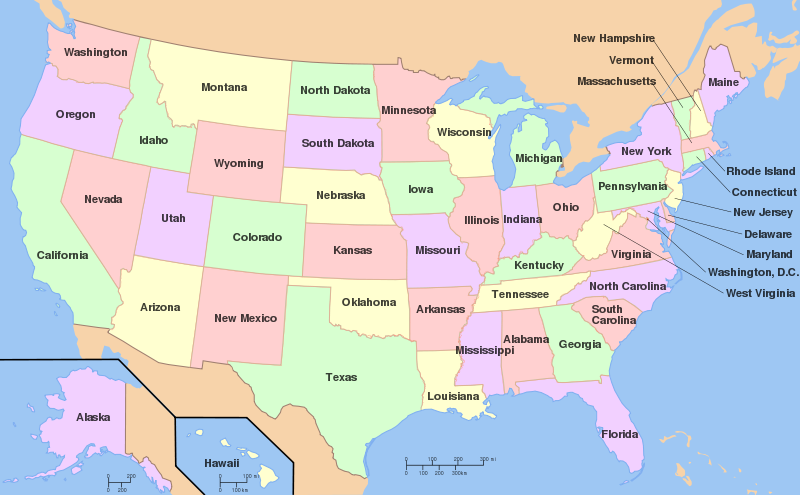
- To examine the origins of federalism
- To identify the role of federalism in the constitution
- To establish the significance of federalism in US government
- To understand the changing relationship between the federal and state governments
- To identify and explain the different phases of federalism
- To examine how accurate “The era of big government is over” is as a description of federalism under Clinton
- To examine to what extent “The era of big government is over” returned under George W Bush
- To examine the impact for federalism under Barack Obama
- To identify and explain the consequences of federalism
Potential Exam Questions
- How far was New Federalism successful in achieving its objectives? (15)
- Why has the relationship between the federal government and the states since 2000 been controversial? (15)
- Explain the impact of New Federalism on the power and influence of the states. (15)
- How and why is federalism enshrined in the Constitution? (15)
- Why, and to what extent, has there been disagreement about the constitutional importance of federalism? (15)
- To what extent has federalism been eroded as a constitutional principle? (15)
Origins of Federalism
What is federalism?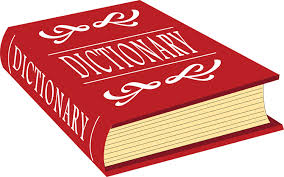
- Federalism is a political concept in which a group of members are bound together by covenant with a governing representative head.
- The term “federalism” is also used to describe a system of the government in which sovereignty is constitutionally divided between a central governing authority and constituent political units (like states or provinces).
- Federalism is a system based upon democratic rules and institutions in which the power to govern is shared between national and provincial/state governments, creating what is often called a federation.
- Proponents are often called federalists.
Origins of Federalism
The Framers were dedicated to the concept of limited government. They were convinced:
- (1) that governmental power poses a threat to individual liberty,
- (2) that therefore the exercise of governmental power must be restrained, and
- (3) that to divide governmental power, as federalism does, is to curb it and so prevent its abuse.
Federalism is a system of government in which a written constitution divides the powers of government on a territorial basis between a central, or national, government and several regional governments, usually called states or provinces.
The Constitution provides for a division of powers, assigning certain powers to the National Government and certain powers to the States.
Powers of the National Government
The National Government is a government of delegated powers, meaning that it only has those powers delegated (granted) to it in the Constitution. There are three types of delegated powers:
- The expressed powers are those found directly within the Constitution.
- The implied powers are not expressly stated in the Constitution, but are reasonably suggested, or implied by, the expressed powers.
- The inherent powers belong to the National Government because it is the government of a sovereign state within the world community. There are few inherent powers, with an example being the National Government’s ability to regulate immigration.
Powers denied to the National Government
Powers are denied to the National Government in three distinct ways:
- Some powers, such as the power to levy duties on exports or prohibit the freedom of religion, speech, press, or assembly, are expressly denied to the National Government in the Constitution.
- Also, some powers are denied to the National Government because the Constitution is silent on the issue.
- Finally, some powers are denied to the National Government because the federal system does not intend the National Government to carry out those functions.
The States
| Powers reserved to the States | Powers denied to the States |
| • The 10th Amendment declares that the States are governments of reserved powers.
• The reserved powers are those powers that the Constitution does not grant to the National Government and does not, at the same time, deny to the States. |
• Just as the Constitution denies many powers the National Government, it also denies many powers to the States.
• Powers denied to the States are denied in much the same way that powers are denied to the National Government; both expressly and inherently. |
Exclusive and Concurrent Powers
| Exclusive Powers | Concurrent Powers |
| • Powers that can be exercised by the National Government alone are known as the exclusive powers.
• Examples of the exclusive powers are the National treaties with foreign states, and to lay duties (taxes) on imports. |
• The concurrent powers are those powers that both the National Government and the States possess and exercise.
• Some of the concurrent powers include the power to levy and collect taxes, to define crimes and set punishments for them, and to claim private property for public use. |
Local Government
- There are more than 87,000 units of local government in the United States today.
- Each of these local units is located within one of the 50 States. Each State has created these units through its constitution and laws.
- Local governments, since they are created by States, are exercising State law through their own means.
Federalism in the Constitution
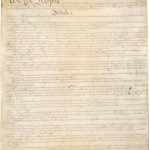 The U.S. Constitution establishes a government based on “federalism,” or the sharing of power between the national, and state (and local) governments. This power-sharing form of government is the opposite of “centralized” governments, such as those in the UK and France, under which national government maintains total power or sovereignty. While each of the 50 states has its own constitution, all provisions of state constitutions must comply with the U.S. Constitution. For example, a state constitution cannot deny accused criminals the right to a trial by jury, as assured by the U.S. Constitution’s 6th Amendment. Under the U.S. Constitution, both the national and state governments are granted certain exclusive powers and share other powers.
The U.S. Constitution establishes a government based on “federalism,” or the sharing of power between the national, and state (and local) governments. This power-sharing form of government is the opposite of “centralized” governments, such as those in the UK and France, under which national government maintains total power or sovereignty. While each of the 50 states has its own constitution, all provisions of state constitutions must comply with the U.S. Constitution. For example, a state constitution cannot deny accused criminals the right to a trial by jury, as assured by the U.S. Constitution’s 6th Amendment. Under the U.S. Constitution, both the national and state governments are granted certain exclusive powers and share other powers.
The Division of Powers
The Supremacy Clause
The Supremacy Clause in the Constitution establishes the Constitution and United States laws as the “supreme Law of the Land.”
| Advantages of Federalism | Disadvantages of Federalism |
| Fosters state loyalties: Many Americans feel close ties to their home state, and federalism maintains that connection by giving power to the states. | Prevents the creation of a national policy: The United States does not have a single policy on issues; instead, it has fifty-one policies, which often leads to confusion. |
| Practices pragmatism: Running a country the size of the United States, with such a diverse population, is much easier to do if power is given to local officials. Likewise, state and local officials are closer to the problems of their areas, so it makes sense for them to choose policies to solve those problems. | Leads to a lack of accountability: The overlap of the boundaries among national and state governments makes it tricky to assign blame for failed policies. |
| Creates laboratories of democracy: State governments can experiment with policies, and other states (and the federal government) can learn from their successes and failures. | Citizen Ignorance
· Critics argue that federalism cannot function well due to ignorance. · Most Americans know little about their state and local governments, and turnout in state and local elections is often less than 25 percent. · Citizens consequently often ignore state and local governments, even though these governments have a lot of power to affect people’s lives. |
| Leads to political stability: By removing the national government from some contentious issue areas, federalism allowed the early U.S. government to achieve and maintain stability. | |
| Encourages pluralism: Federal systems expand government on national, state, and local levels, giving people more access to leaders and opportunities to get involved in their government. | |
| Ensures the separation of powers and prevents tyranny: Even if one person or group took control of all three branches of the federal government, federalism ensures that state governments would still function independently. Federalism, therefore, fulfils the framers’ vision of a governmental structure that ensures liberty. |
 Examination Practice: How and why is federalism enshrined in the Constitution? (15)
Examination Practice: How and why is federalism enshrined in the Constitution? (15)
[Type your answer here…]
Reading & Note Taking Task: Chapter 1, The Changing Federal-State Relationship p22-26
[Type your notes here…]
Learning Checkpoint |
Self-Assessment | Teacher Assessment |
| Examine the origins of federalism | ||
| Identify the role of federalism in the constitution | ||
| Establish the significance of federalism in US government |
The Federal-State Relationship
Federal-State Relations
Federalism is a fluid concept. Historically, the relationship between the two levels of government has been defined by the courts, Congress, and funding policies.
The role of the courts
 Questions concerning the respective powers of the states and the federal government are constitutional, and the courts must address them. Early Supreme Court decisions reflected the views of Chief Justice John Marshall, who personally favored a strong national government. In defining commerce in the broadest possible terms in Gibbons v. Ogden (1824), he argued that Congress’s power to regulate interstate commerce could be “exercised to its utmost extent.” Marshall’s interpretation of the commerce clause has provided a means to enforce civil rights laws and regulate wages, working conditions, and other areas that seem, at first glance, far removed from federal jurisdiction. At the same time, however, he believed the Bill of Rights imposed no restrictions on the states.
Questions concerning the respective powers of the states and the federal government are constitutional, and the courts must address them. Early Supreme Court decisions reflected the views of Chief Justice John Marshall, who personally favored a strong national government. In defining commerce in the broadest possible terms in Gibbons v. Ogden (1824), he argued that Congress’s power to regulate interstate commerce could be “exercised to its utmost extent.” Marshall’s interpretation of the commerce clause has provided a means to enforce civil rights laws and regulate wages, working conditions, and other areas that seem, at first glance, far removed from federal jurisdiction. At the same time, however, he believed the Bill of Rights imposed no restrictions on the states.
Throughout most of the 19th century and on into the 1930s, the Supreme Court did not follow Marshall’s lead; it was reluctant to allow an expansion of federal power at the expense of the states. As the makeup of the Court changed with the appointments made by President Franklin Roosevelt, so did the direction of its decisions. In the areas of civil liberties and civil rights in particular, the Supreme Court and the lower federal courts have set national standards that states and municipalities are obligated to follow. Through their interpretation of the due process and equal protection clauses of the Fourteenth Amendment, they have brought about a significant transfer of power from the states to the federal government. This amendment, along with the Fifteenth and the Twenty-fourth, has largely restricted the authority of the states to determine who can vote and where they cast their ballots. The courts have directed how state and local authorities draw their congressional, legislative, and school-board district boundaries.
In recent years, the Supreme Court limited the powers of the federal government in favour of the states. United States v. Lopez (1995) held that Congress cannot prohibit guns in the area around a public school under the commerce clause. The Court also upheld Oregon’s “death with dignity” law, which allows the terminally ill to end their lives, against a federal challenge, in Gonzales v. Oregon (2006).
The role of Congress
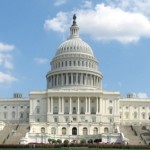 Legislation can compel states either directly or indirectly to take action they otherwise might not take. Again, civil rights provide a pertinent example. The 1965 Voting Rights Act intruded on the constitutional power of the states to set voter qualifications by challenging the literacy tests and poll tax that were used in the South to get around the Fifteenth Amendment.
Legislation can compel states either directly or indirectly to take action they otherwise might not take. Again, civil rights provide a pertinent example. The 1965 Voting Rights Act intruded on the constitutional power of the states to set voter qualifications by challenging the literacy tests and poll tax that were used in the South to get around the Fifteenth Amendment.
A wide range of environmental laws establishes requirements for air and water pollution control and the disposal of hazardous wastes to which states and municipalities must adhere. These are examples of mandates.
Congress may also threaten to cut off funds if states do not implement a particular policy. Although a law forcing the states to establish 21 as the minimum drinking age or 55 miles per hour as the maximum highway speed might be unconstitutional, Congress can and did threaten to cut off federal highway funds to states that did not comply with the two limits. This is known as a condition of aid.
The role of funding policies
The most powerful tool the federal government has in its relations with the states is money. A grant-in-aid is funding provided by the federal government to the states or municipalities. The earliest federal grants were land. Under the Morrill Act (1862), the states received large tracts of land for the specific purpose of establishing agricultural and mechanical colleges (still known as land-grant colleges).
A categorical grant earmarks funds for a specific purpose. The two types of categorical grants are project and formula grants. A project grant is awarded on the basis of competitive applications; money from the National Institutes of Health or the National Endowment for the Humanities is awarded in this manner. While many project grants go to individuals, formula grants go to states and municipalities that meet the requirements described in the legislation. Depending on what the grant is for, factors such as the age, education, and income level of the population; the number of miles of highway; or the unemployment rate might be relevant to qualifying for aid.
A block grant is given for more general purposes than categorical grants — say, mental health, community services, mass transit, or job training — and state and local governments have a great deal of flexibility in how the money is actually spent. A county may decide to upgrade its buses rather than build a light rail system, for example. This does not mean, however, that strings are not attached to block grants. Recipients are bound by federal mandates. The county upgrading its buses may be required to buy a certain percentage of them from a minority-owned business or hire additional drivers from a training program for those on welfare.
Article 4
Article 4 of the US Constitution establishes the relationship among the states. The Founding Fathers enumerated several key doctrines in Article 4 that helped construct the federal model of government.
Full Faith and Credit Clause
“Full Faith and Credit shall be given in each State to the public Acts, Records, and judicial Proceedings of every other State. And the Congress may by general Laws prescribe the Manner in which such Acts, Records and Proceedings shall be proved, and the Effect thereof.”
This clause mandates that the states respect each other’s laws, legal decisions, and records, such as driver’s license, marriage proceedings, divorce records, and the like. In recent years, there has been much speculation about whether the full faith and credit clause would mandate that same-sex marriages in one state be recognized in all fifty states.
Privileges and Immunities Clause
“The Citizens of each State shall be entitled to all Privileges and Immunities of Citizens in the several States.”
This clause establishes that a state can’t treat non-residents any differently than it treats its own residents.
Extradition Clause
“A Person charged in any State with Treason, Felony, or other Crime, who shall flee from Justice, and be found in another State, shall on Demand of the executive Authority of the State from which he fled, be delivered up, to be removed to the State having Jurisdiction of the Crime.”
Accused persons who flee to another state must be returned to the state where the crime was committed.
Admission of States
“New States may be admitted by the Congress into this Union; but no new State shall be formed or erected within the Jurisdiction of any other State; nor any State be formed by the Junction of two or more States, or Parts of States, without the Consent of the Legislatures of the States concerned as well as of the Congress.The Congress shall have Power to dispose of and make all needful Rules and Regulations respecting the Territory or other Property belonging to the United States; and nothing in this Constitution shall be so construed as to Prejudice any Claims of the United States, or of any particular State.”
Section 3 provides that only Congress can admit a new state into the Union. This provision held greater importance in the nineteenth century, when admission to the Union occurred on a regular basis.
Republican Government
“The United States shall guarantee to every State in this Union a Republican Form of Government, and shall protect each of them against Invasion; and on Application of the Legislature, or of the Executive (when the Legislature cannot be convened), against domestic Violence.”
Section 4 establishes three important doctrines. First, states must elect their government officials. Second, the federal government is bound to protect the states from foreign invasion. And third, the state governments can call upon the federal government to quell domestic violence within their states.
 Examination Focus: Skills Builder
Examination Focus: Skills Builder
Read the indicative content for the two example exam questions.
Use these as a guide to attempt the third exam question.
Why, and to what extent, has there been disagreement about the constitutional importance of federalism?
Indicative Content
There is a widely held view in the USA, especially on the right of the political spectrum, that liberty is best protected by policies being made in local communities with the policy-makers being held locally accountable and that, conversely, the greatest threat to freedom was/is a powerful central government relative to state governments. Thus federalism is seen as the key constitutional device to protect liberty and any dilution of federalism is seen as undermining freedom. However, other Americans argue that the consistent application of the Bill of Rights can only be done/monitored by the national government and point out that, under the banner of ‘States Rights’, local communities have been guilty of fostering tyranny of the majority – especially the white communities in the South.
How and why is federalism enshrined in the Constitution?
Indicative Content
Federalism is the separation of the structure of government into two more or less autonomous layers, and the powers of each are entrenched in the constitution. The term ‘federalism’ is not mentioned in the constitution, but the role of the states in US government is established in the constitution principally by: equal representation of each state in the Senate; the Electoral College for electing the president; state boundaries cannot be changed without states’ consent; the constitution can only be amended with the consent of ¾ of the state legislatures; the tenth amendment reserves to the states all those powers not explicitly delegated to the central government. The framers of the constitution wished to establish a political system which protected the role of the states, as the founders of the new country, and to create a central government strong enough to pull the country together into a functioning whole. Thus, both were granted significant powers within a federal system.
Is the USA still a federal state?
[Type your answer here…]
Phases of Federalism
Although the Constitution provides the structure for the federal-state relationship there have been different types of federalism known as ‘phases of federalism’.
- Dual Federalism
- Cooperative Federalism
- Creative Federalism
- New Federalism
Dual Federalism
When the Constitution was written, it was widely understood that the federal government and the states would exercise different separate powers. The federal government would be responsible for all foreign affair, national defence and all interstate matters (such as trade that crossed state boundaries); the states would be responsible for everything else, including any powers not specifically mentioned in the Constitution (known as ‘reserved powers’). For most Americans, this meant that the majority of decisions affecting would be made by their state government which, in principle, best understood them and had their interests at heart. This relationship between the states and the federal government is known as ‘dual federalism’.
In practice, the balance between the two tiers of government was never as neat as dual federalism suggests. During the First World War, for example, the government took direct control of industries that were essential to the war effort and states did not always look after the best interests of all their citizens, for example in the South where African-Americans looked to the federal courts to protect their interests from state governments that practised racial segregation.
Cooperative Federalism
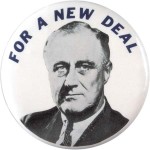 When the Great Depression struck, in the 1930s, the balance between the states and the federal government was decisively altered. The states did not have the resources to help citizens who had lost their jobs and, often, their homes. The federal government did have the resources and it used them, in the New Deal, to help those who were suffering and to stimulate the economy. However, this meant federal government involvement in welfare matters that had previously been considered the exclusive responsibility of the states. This changed, overlapping relationship between the states and federal government is known as ‘cooperative federalism’.
When the Great Depression struck, in the 1930s, the balance between the states and the federal government was decisively altered. The states did not have the resources to help citizens who had lost their jobs and, often, their homes. The federal government did have the resources and it used them, in the New Deal, to help those who were suffering and to stimulate the economy. However, this meant federal government involvement in welfare matters that had previously been considered the exclusive responsibility of the states. This changed, overlapping relationship between the states and federal government is known as ‘cooperative federalism’.
Notwithstanding the clear need to help those who were in no position to help themselves, the New Deal was fiercely resisted by the conservatives in the 1930s as undermining the principle of federalism ad weakening the most important constitutional protection of liberty. Even in the 21st century, some conservatives regard the New Deal as the start of a slippery slope leading to ever greater government and, consequently, reduced freedom. Liberals, in contrast, greatly admire the way in which the Constitution allowed the federal government to step in at a time of crisis and make productive use of people who would otherwise have been idle as a result of mass unemployment. Cooperative federalism continued after the Great Depression had ended, as the federal government continued to play a major role through the Second World War and the Cold War.
Creative Federalism
 In the 1960s, the relationship between the states and federal government changed again. President Lyndon B Johnson launched his Great Society programme, designed to end poverty in the USA. In his view, the states had never made a serious effort to tackle the concentrated pockets of poverty, often in the cities (such as Los Angeles South Central district), and could not be relied upon to do so. Therefore his programme often bypassed state governments and worked directly with city or local authorities to implement anti-poverty projects. This further advance of the federal government into matters traditionally seen as the responsibility of the states is known as ‘creative federalism’.
In the 1960s, the relationship between the states and federal government changed again. President Lyndon B Johnson launched his Great Society programme, designed to end poverty in the USA. In his view, the states had never made a serious effort to tackle the concentrated pockets of poverty, often in the cities (such as Los Angeles South Central district), and could not be relied upon to do so. Therefore his programme often bypassed state governments and worked directly with city or local authorities to implement anti-poverty projects. This further advance of the federal government into matters traditionally seen as the responsibility of the states is known as ‘creative federalism’.
The Great Society Programme provoked a backlash, however. Americans of almost all political persuasions agreed that federalism was in danger of becoming meaningless, as policies concerning communities up to 3,000 miles away were being made up in Washington DC.
New Federalism
Since President Johnson left office in 1969, almost every president, both Republican and Democrat, has introduced programmes to re-empower the states and restore a balance closer to the original model of dual federalism. These programmes, although they vary quite significantly, are collectively known as ‘new federalism’. In brief, they have worked as follows;
- President Nixon (Republican 1969-74)
Nixon’s programme, called General Revenue Sharing, allowed the states to spend a greater proportion of their federal grants as they chose.
- President Carter (Democrat 1977-81)
Carter continued the General Revenue Sharing programme of his predecessor, but also cut the amount of federal grants available to the states so that they would have to become self-dependent.
- President Reagan (Republican 1981-89)
Reagan made sharp cuts to funds available to the states, especially for welfare payments, as soon as he took office. He offered the states a new arrangement, reminiscent of dual federalism (called ‘swaps’), in which they would take full responsibility for some welfare programmes while the federal government would take over others in their entirety . The increased cost to the states of such an arrangement led them to reject the proposal.
- President Clinton (Democrat 1993-2001)
Clinton oversaw an economic boom that led to the states building up surplus funds, in many cases, for the first time since the 1920s. These funds were then used to pioneer new policy ideas that suited the states’ needs and priorities, for example Wisconsin started a programme to extend school choice by issuing families with education vouchers that could be used in any school, whether state-run or private.
- President George W Bush (Republican 2001-2009)
Although committed to new federalism in principle, President George W Bush responded to the attacks of 11 September 2001 by increasing government control over any policy that related to national security. Then, when the economy deteriorated sharply in 2008, he introduced an economic stimulus plan that included substantial payments to struggling state governments.
- President Obama (Democrat 2009-)
The first action of President Obama, taking office in the midst of an economic crisis was an economic stimulus plan on an even greater scale than that of his predecessor.
Overall, new federalism has illustrated the difficulty of achieving a relationship between the states and federal government that resembles the balance expected by the Founding Fathers.
The reason that federalism has taken so many forms is that none has worked effectively. The only time that the states have enjoyed a resurgence has been during an economic boom. Whenever there has been a national crisis, the federal government has either chosen to assert dominance over the states or has been required to do so, often with the full backing of states that have been powerless to cope with events.
 Examination Focus: Skills Builder
Examination Focus: Skills Builder
Read the indicative content for the example exam question.
Use these as a guide to attempt the second exam question.
Why has the relationship between the federal government and the states since 2000 been controversial?
Indicative Content
Throughout this period, as in many others in US history, the relationship between the federal government and the states has been controversial because of clashes over the sharing of power between the federal government and the states, and the policies both are pursuing.
This can lead to apparently contradictory positions, e.g. Republicans supporting DOMA, at odds with their usual support for states’ rights.
Under both the Bush and Obama administrations there was some assertion of federal government authority
2000-08:
- federal government spending rose by about a third through the course of the Bush administration and the federal government expanded its reach through policies such as ‘No Child Left Behind’, and the Medicare prescription drug benefit
- in addition, the emergencies of 9/11, the banking crash and the recession required federal response: 9/11 – increase in defence spending, creation of Department of Homeland Security; the banking crash and recession – TARP and bank bailout legislation in autumn 2008
- The GOP-controlled Congress was also willing to override states’ rights to pursue policy goals, e.g. the Teri Schiavo case
2008-:
- marijuana became a source of controversy as initially the Obama administration sought to enforce federal laws over state laws, but then adopted a more emollient approach
- state laws on immigration – the administration has taken legal action against Arizona’s SB 1070 ‘show me your papers’ law
- the Affordable Care Act required states to set up health insurance exchanges and the federal government intervened to run them itself when some states refused; the SC ruled in Sebelius that the federal government could not force the states to expand Medicaid
How far was New Federalism successful in achieving its objectives?
[Type your answer here…]
Learning Checkpoint |
Self-Assessment | Teacher Assessment |
| Understand the changing relationship between the federal and state governments | ||
| Identify and explain the different phases of federalism |
The Era of Big Government
Bill Clinton (1992-2000)
“The era of big government is over. But we cannot go back to the time when our citizens were left to fend for themselves. Instead, we must go forward as one America, one nation working together to meet the challenges we face together. Self-reliance and teamwork are not opposing virtues; we must have both.”
– State of the Union Address 1996
- In 1996 Clinton signed the Personal Responsibility and Work Opportunity Act that ended the nationally run welfare program and put the responsibility of welfare to work programs into the hands of that states, funded by block grants.
- The Clinton administration brought forth Vice President Gore’s National Performance Review (NPR), which attempted to revamp governmental organisation and management.
- The report also considered federalism reforms to reduce categories, increase collaboration and create a more ‘viable federal partnership’.
- The report did intend to empower state and local governments by creating an Enterprise Board to support community empowerment initiatives, cut unfunded mandates, merge categorical grants into more flexible grants, permit federal agencies to waive rules and deregulate public housing.
- During this period of New Federalism, governmental power was shifting both to and away from the central structure. After 1980 Congress continually increased the power of the national government, while reducing the power of the states. At the same time, the Supreme Court has transferred power back to the states. Both the Burger and Rehnquist courts have been strong supporters of state authority.
George W Bush (2000-2008)
- The Bush administration moved into a period of ‘radio silence’ on New Federalism. The War on Terror, with all its separate wars and policies created another strong centralized period of political history. The details of the effects of the Bush administration on federalism and intergovernmental relations are only just beginning to be analysed. But the public shows continued support for the idea of devolving power out of Washington (74% of people would prefer more power to state and local governments in policy and programs).
- Although federalism continues to be non-centralised in a many ways and many programs and responsibilities are transferred to the state and local governments, lack of public support and economic expansion has caused the increase in unfunded mandates.
- National involvement in states policies through the grant process force us to evaluate whether grants are empowering the states or the central government. When the national government awards a grant, often there are conditions attached to the funding. The national government, which has no formal right to make decisions in state policies, becomes an actor in the state’s political theatre.
- Grants are offered for specific activities, which place that activity on a political agenda; or grants may impose that a certain rule be adopted prior to funding.
Barack Obama (2008-present)
How has Barack Obama approached federalism?
Whereas the Bush administration concentrated mainly on war and terrorism, the Obama White House is clearly much more focused on domestic policy as a way of delivering his ‘change’ agenda. This has a profound effect on the relationship between Washington and the states. War and security against terrorism are conducted exclusively by the federal government; domestic policy is increasingly the domain of the states. Thus the following trends in federalism have so far been seen during the Obama presidency:
- The ratio of state and local government employees to federal employees is the highest since before Roosevelt’s New Deal in the 1930s.
- Federal government assistance to the states increased from 3.7% of gross domestic product (GDP) in 2008 to 4.6% of GDP in 2009.
- Money from the federal government accounted for 30% of state government spending in 2009 compared with 25% in 2008.
- Of the $787billion of the Economic Stimulus Package 2009, one-third ($246billion) went to or through the state governments. (Under Bush’s 2003 stimulus package, just $20billion went to the states).
Why did Barack Obama increase funding to the states?
There are a number of reasons for the increase in federal money to the states under the Obama administration:
- The re-authorisation of the State Children’s Health Insurance Program (SCHIP) (2009).
- The expansion of Medicaid under Obama’s healthcare reform legislation.
- Higher education expenditure (such as Pell Grants in 2010).
- $4.35billion invested in the Race to the Top program to boost education in the states.
What did Republicans think about this?
Obama came in for a good deal of criticism for his view of federalism. Many Republicans saw the passage of the healthcare reform legislation as ‘the end of federalism’ and there were those in the Tea Party movement who thought Obama more of a socialist than a federalist. In exit polls at the end of the 2010 mid-term elections, 74% of Republicans and 60% of independents agreed with the statement that, “the federal government is doing too many things better left to businesses and individuals”.
Learning Checkpoint |
Self-Assessment | Teacher Assessment |
| Examine how accurate “The Era of Big Government is over” is as a description of federalism under Clinton | ||
| Examine to what extent the “Era of Big Government” returned under George W Bush | ||
| Examine the impact for federalism under Barack Obama |
Consequences of Federalism
Why federalism?
Western expansion – Needed someone to intervene, manage this growth
Amendments – 14th allowed fed govt to end segregation, 16th –impose tax
Population – 4 million to 300, needed a big government to manage
Industrialisation – Needed regulation, standardisation,
Communication – Improvements brought nation closer, needed regulation, standardisation
Great depression – States needed the resources that national government had. New deal central government huge expenditure-increased power of fed government
Foreign policy – WW2 and events in wider world gave federal govt wider role
S/C cases – interpreted the implied powers of the constitution
| Legal | Political | Economic | Regionalism |
| · Laws differ greatly between states, especially on age of marriage, driving regulations, death penalty, drugs, and local taxation. E.g. Oregon has doctor assisted suicide. | · Each state has different electoral methods.
· Different candidate selection, different mechanisms for polling, e.g punch cards,/touch screen. Montana had 100% postal ballot. · Contributed to issues of 2000 election. · Parties are state based. Virginia Republicans are more liberal than South Carolina Republicans, therefore relative lack of party unity in Congress |
· Complex tax system as both fed and state govts can raise income tax
· Property and sales tax differ between states
|
· Very distinct cultures in the different regions in the country. E.g. Bible belt very different to New England.
|
How far do you think the Founding Father’s concept of a federal state has been upheld?
| Evidence of moves towards the centre | Evidence of continuing significance of federalism |
| [Type your evidence and examples here…] | [Type your evidence and examples here…] |
Learning Checkpoint |
Self-Assessment | Teacher Assessment |
| Identify and explain the consequences of federalism | ||
| Collected evidence to show trends in power moving towards the centre | ||
| Collected evidence to show trends in the continuing significance of federalism |


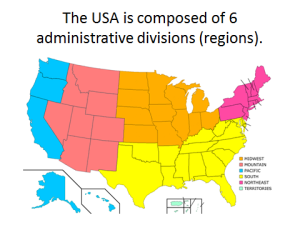
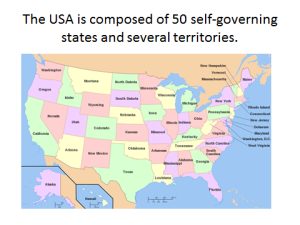
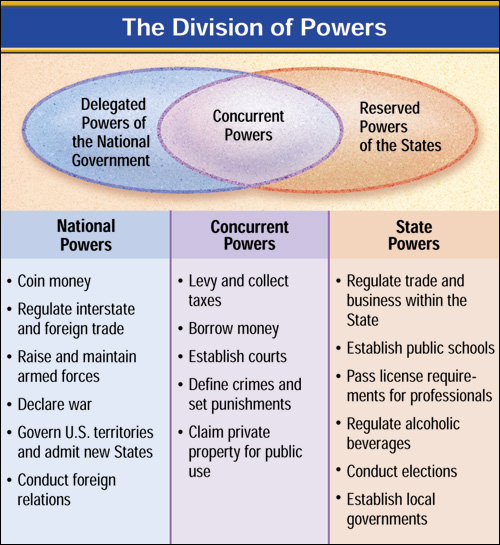

0 Comments